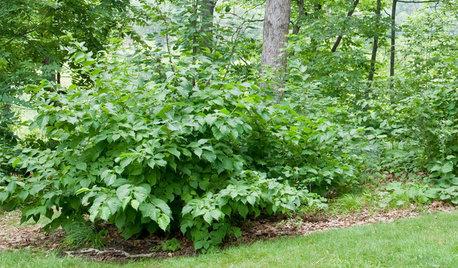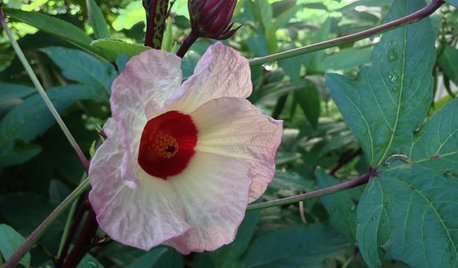Does Dampening affect larger tomato plants too?
ju1234
9 years ago
Related Stories

EDIBLE GARDENSSummer Crops: How to Grow Tomatoes
Plant tomato seedlings in spring for one of the best tastes of summer, fresh from your backyard
Full Story
HOUSEPLANTS8 Essentials for Healthy Indoor Plants
Houseplants add so much to our homes — and can thrive when grown in the right conditions. Keep these tips in mind
Full Story
GARDENING GUIDESGreat Design Plant: Corylus Americana Awakens the Woodland Garden
Plant American hazelnut for three seasons of interest and to feed our furry and feathered friends
Full Story
EDIBLE GARDENSGarden BFFs? Why Your Vegetables Are Begging for Companion Plants
Foster friendships among plants for protection from pests, pollination support and color camaraderie
Full Story
FARM YOUR YARDHow to Build a Raised Bed for Your Veggies and Plants
Whether you’re farming your parking strip or beautifying your backyard, a planting box you make yourself can come in mighty handy
Full Story
EDIBLE GARDENSGreat Design Plant: Roselle Tantalizes With Beauty and Flavor
Call it a fruit or a flower or a sweet vegetable. This hibiscus is so lovely, all that matters is calling it forth in your garden
Full Story
PATIOSPatio Details: Dog Won’t Trample the Plants With This Design
An Asian-inspired backyard redo adds clean lines, a new water feature and a sense of spaciousness — with room for a large beloved dog
Full Story
PETSGarden Alert: 22 Plants to Keep Away From Pets
Avoid potential danger by keeping dogs and cats away from these landscaping and houseplant favorites
Full Story
HOUZZ TOURSMy Houzz: A Woodsy Home Welcomes Animals and Plants
An open-hearted couple builds a home in the forest that shows a love of the land and (almost) all of its inhabitants
Full Story
GARDENING GUIDESGreat Garden Combo: 3 Wonderful Plants for a Deer-Resistant Screen
Protect your privacy and keep deer at bay with a planting trio that turns a problem garden area into a highlight
Full StoryMore Discussions






rhizo_1 (North AL) zone 7
carolyn137
Related Professionals
Accokeek Landscape Architects & Landscape Designers · Wilmington Landscape Contractors · Hickory Hills Landscape Contractors · Kahului Landscape Contractors · Lakewood Landscape Contractors · Palatine Landscape Contractors · Greenfield Landscape Contractors · Mobile General Contractors · Rolling Hills Estates General Contractors · Estero Decks, Patios & Outdoor Enclosures · Foothill Farms Decks, Patios & Outdoor Enclosures · Gaithersburg Decks, Patios & Outdoor Enclosures · Pittsburgh Decks, Patios & Outdoor Enclosures · Universal City Decks, Patios & Outdoor Enclosures · Westminster Decks, Patios & Outdoor Enclosuresddsack
labradors_gw
carolyn137
ju1234Original Author
ddsack
barrie2m_(6a, central PA)
carolyn137